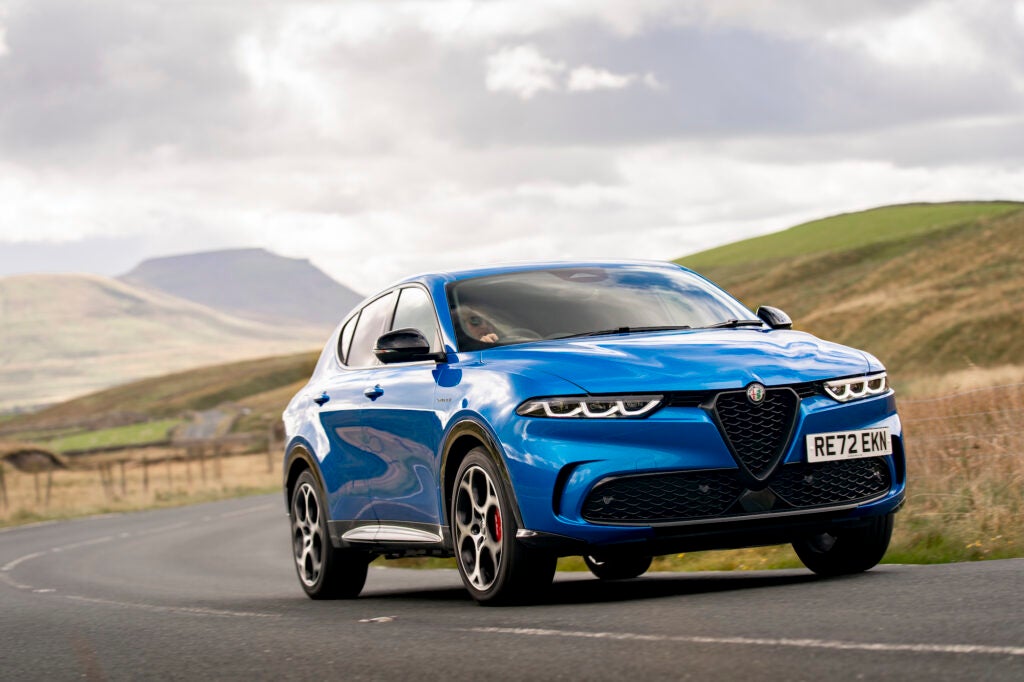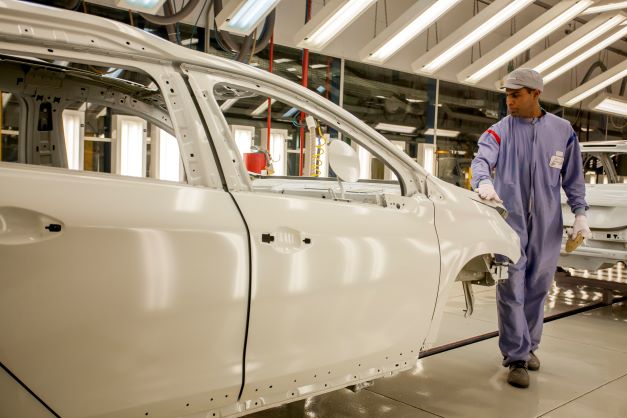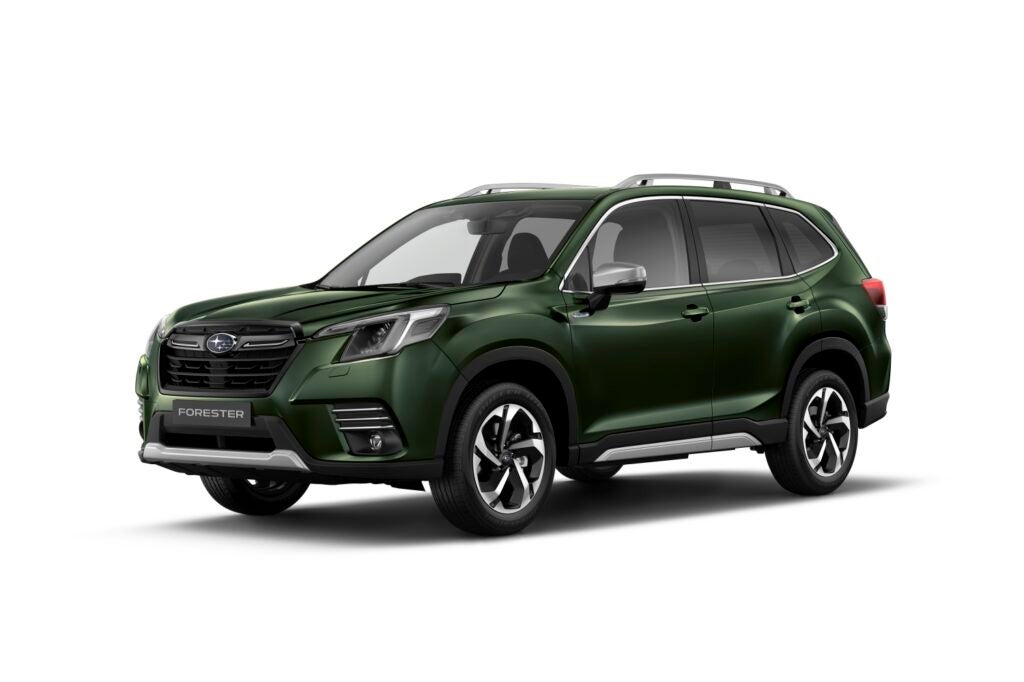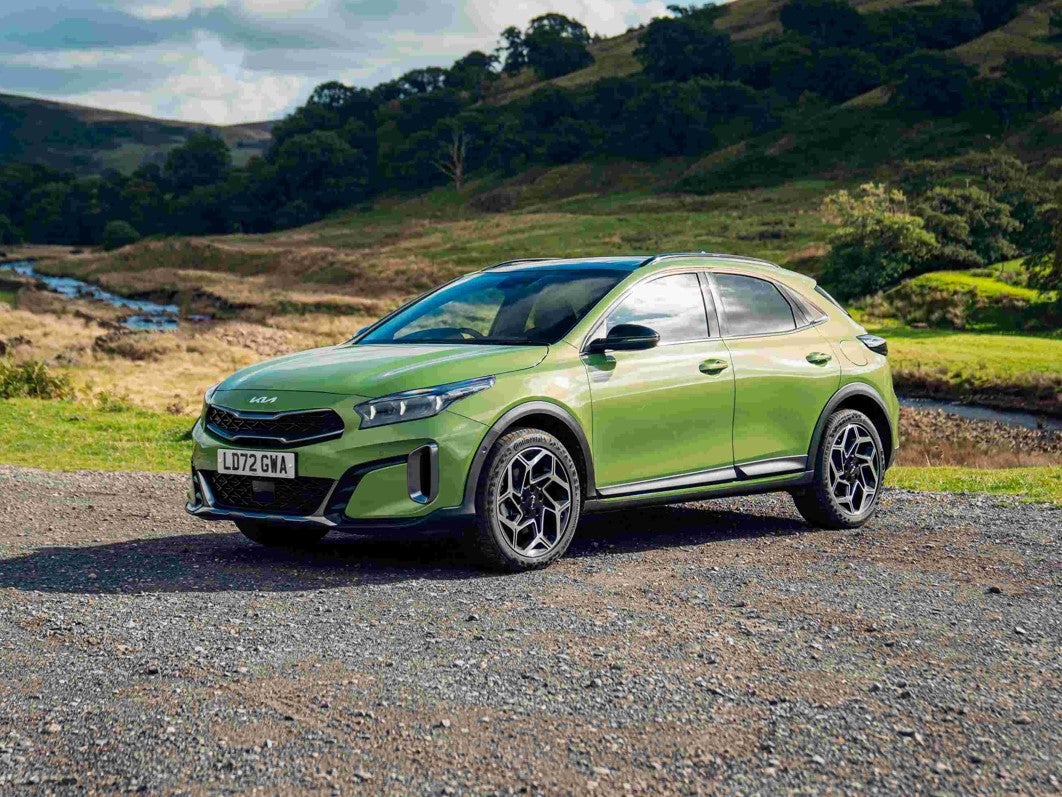
The first thing that appealed about the Kia XCeed, a PHEV 3 model, was the bright metallic ‘Kermit’ (officially ‘Spirit’) green, a freshing change from the one minute to midnight dark metallics which seem to adorn so many cars these days, along with the perennial silver.
The second is that this 3 trim level model only briefly fires its petrol engine when cold and then trundles around urban areas on electric power only, at least until the battery – good for around 40 miles – runs down and, even then, ICE engine use is minimised.
Charging time is slow using a standard domestic UK three pin plug – four hours 40 minutes estimated from 50% and the battery needed seven hours 40 on the drip feed to get from 12% to full.
Kermit greets you by folding out his ears (side mirrors) but that’s all you get. For access, push a button on the door handle to open the car, hardly arduous and arguably more reliable than some other systems.
If you like Auto Hold, aka hill holder, you have to turn it on every time which seems to be the norm but it would have been nice if Auto High Beam stayed switched on.
Mid-life refresh
Kia refreshed the XCeed about 18 months ago with an updated and ‘sportier’ exterior, adding also sporty GT line trim (not for the PHEV) and various other changes.
The Ceed model line itself dates back to the mid 2000s when it arrived as the first model produced only in the then-new Slovakia plant which had been broken in with assembly of the Sportage SUV, the XCeed variant followed a few years later.
Kia XCeed gets refreshed design, enhanced tech and powerful GT-line trim
Kia reckons the XCeed is the best-selling model in its wider Ceed line-up because it “provides the commanding driving position and comfort of an SUV with the dynamic handling and manoeuvrability of a compact European hatchback”.
The update brought new LED headlamps and a revised grille, front bumper and air intake. Fog lamps were incorporated in the headlights. Tail updates included a new diffuser with a gloss black skid plate and a so called ‘exhaust look’ design.
Shares little with hatch
The C-crossover sits on a 2,650mm wheelbase (once D segment territory) and the XCeed front and rear overhangs are 25mm longer at the front (to 905mm) and 60mm at the rear (to 840mm) compared with its hatchback sibling with which it shares only the front doors.
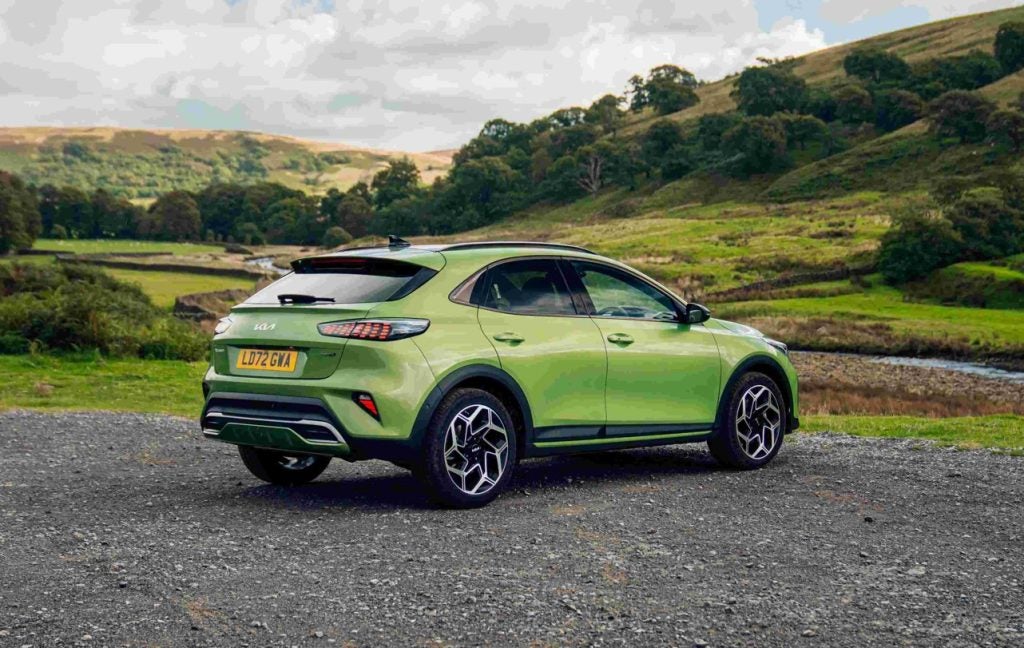
XCeed ground clearance varies by wheel size and is up to 44mm higher. Wheel arch and side sill cladding, along with satin chrome roof rails, add to the SUV look.
Interior updates included new graphics for the 12.3-inch digital instrument cluster which changes appearance according to drive modes, a gloss black transmission panel and a new thin edged rear view mirror.
The XCeed is 85mm longer than the five-door hatchback and 120mm shorter than the popular Sportage. At 1,495mm it is 48mm above the Ceed and 155mm below the Sportage, providing drivers with a lower centre of gravity than its taller sibling and a nice compromise for some buyers who want a bit easier access – the hip point is 44mm higher than the Ceed – rather than going full SUV.
Only the top GT-Line S gets a power tailgate but the middle spec PHEV 3 gets most other niceities expected these days such as heated front seats and dual zone climate control. As with many smaller brands, you add or delete items going up and down the model list and PHEV is a single, take it or leave it specification that should suit most buyers.
Powertrains
The full range offers petrol, diesel, mild hybrid and and plug in powertrains starting with a three pot one litre and ending with a turbocharged I4 1.6.
Automatic, as available, is a seven speed dual clutch unit.
The PHEV combines an 8.9kWh lithium-polymer battery pack, a 44.5 kW electric motor, and the 1.6 litre Kappa four cylinder GDI (gasoline direct injection) engine paired with a six speed DCT which can send “up to” 141 ps and 265Nm. Hedging bets, Kia quotes all electric range of 48km (30 miles) or 60km (37 miles) of city driving. So call it ‘actual results may vary’ and the 40 miles we got.
“This will enable drivers to complete the majority of daily drives and short commutes solely on electric power,” the automaker sez. Check.
European built Kias have suspensions tuned for local conditions and handling and ride quality were both acceptable given that most of my time with the car was urban errand running with a brief squirt out on to low speed country roads.
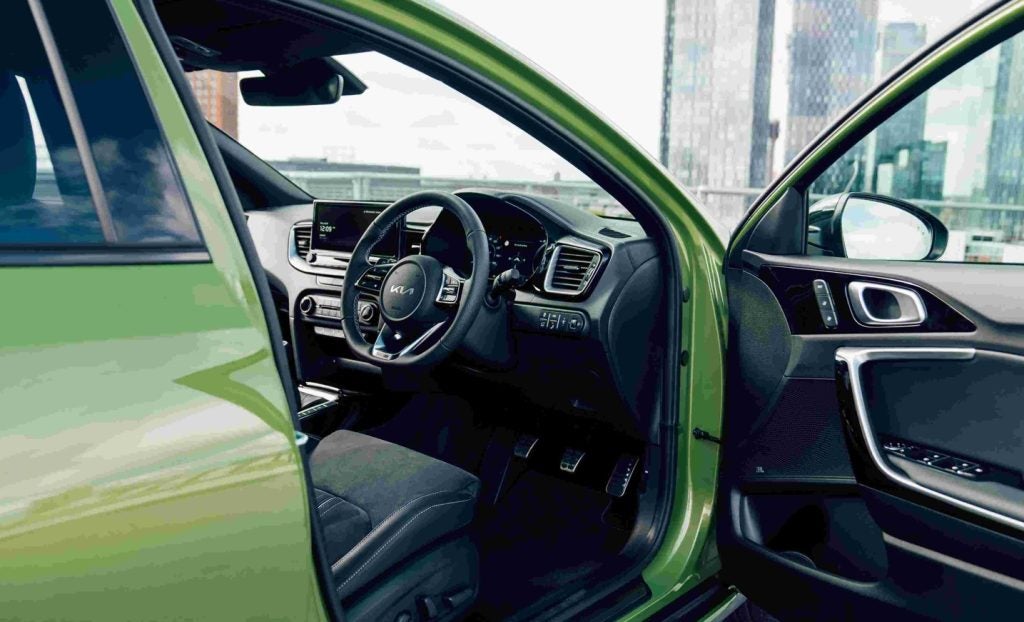
The 10.25-inch touchscreen navigation system allows Bluetooth connection of two mobile devices at once and Android Auto and Apple CarPlay are also standard. Wireless phone charging and premium JBL sound are the domain of the top spec only and not the PHEV.
Kia Connect provides information via the touchscreen or through an app and uses its own eSIM card to retrieve and update live data during a drive. This includes live traffic information, weather forecasts, points of interest, and details of potential on- and off-street parking (including price, location and parking availability). Drivers can use the app to plan journeys in advance by sending navigation data via smartphone to the vehicle before a journey and also locate their vehicle.
The updated XCeed has USB Type-C ports for front and rear passengers with fast charging capability.
Smart Cruise Control (SCC) is upgraded with the addition of the navigation-related function. Navigation-assisted SCC (NSCC) benefits from an Auto-set function which automatically adjusts the XCeed’s cruising speed according to the maximum set for that road in the navigation’s on-road data system.
In addition to the Auto-set function which controls maximum speed, NSCC also adds ‘zone’ functionality (NSCC-Z) which reduces vehicle speed in ‘safe zones’ identified in the navigation system. Once out of the ‘safe zone’ the system will return the vehicle to its previous cruising speed.
An additional development of the NSCC seen on the XCeed is the Curve function (NSCC-C) which uses the navigation data to predict an upcoming bend in the road, reduces cruising speed if needed to go through the corner safely, and then returns to the preset speed once the corner has been navigated.
Overall, the XCeed is a thoroughly likeable compromise between C-segment hatchback and full blown SUV. The spec package for this version lacks a few items but PHEV compensates.



